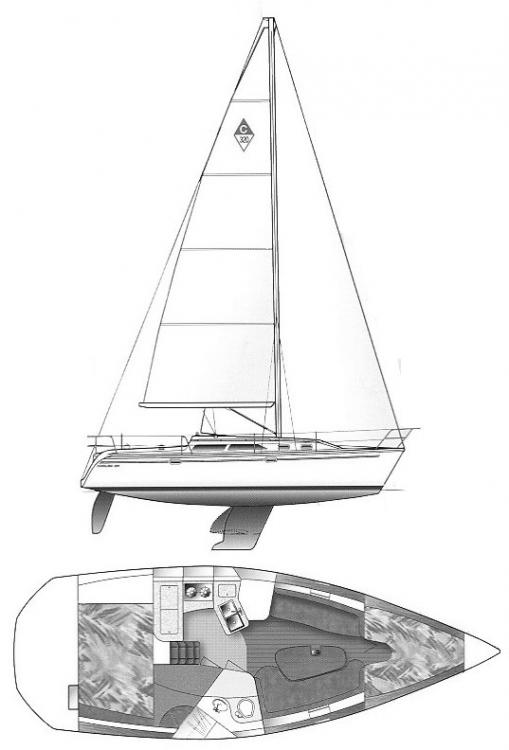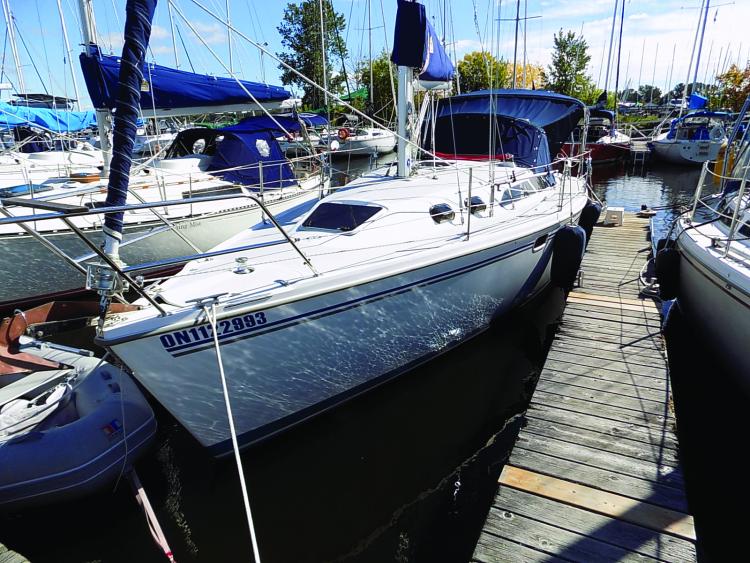An Active Market for the Catalina 320
Every year in the marine surveying business certain rhythms seem to develop, each year slightly different than the last. It might be an uptick in certain sizes or genre of boats or even the type or age group of the buyers. For whatever reason, this year I seem to have surveyed more Catalina 320s then I have in years past. The market seems active with the last boat surveyed being on the market for less than a day.

Buyers have included those looking to buy the first family boat, to older, experienced boaters wanting to downsize while maintaining decent head room and reasonable interior space. Actual sales prices for the 320 vary greatly with a reported low of $34,000 to a high of $80,000. By some measures, the 320 has replaced the iconic Catalina 30 as Catalina’s representative in the used medium/small-size, entry-level cruiser.
The Catalina 320 was introduced in 1993 and in production until 2009 with an impressive 1161 boats built. This puts the age range of available 320s between 10 years and 26 years old, which likely accounts for the variety of asking prices. As with many pre-owned vessels, the individual boat condition is heavily reliant on the diligence and mind set of the previous owners. Smaller boats often serve as a starting platform with owners getting on-the-job training in basic maintenance practices. Boats regardless of make or model are often tasked with absorbing the learning curve of boat ownership.

While other companies in this demographic routinely undergo major redesigns and facelifts, Catalina has for the most part kept the same basic lines throughout the history of its product line. The lines of the Gerry Douglas-designed 320 remain consistent with other Douglas/Catalina designs. Whether you agree or disagree with the marketing strategy, Catalina as a company is one of the few boat builders that has been able to survive since 1969, weathering the multiple economic downturns, market shifts, embargos, and luxury taxes that have put many domestic and foreign manufacturers out of business.
Considered a smaller boat by today’s cruisers’ standards, the interior space and layout of the 320 feels like a larger boat. The 320 is available in both a deep draft (6.4 feet) or a shallow draft version (4.25 feet). At six and a half feet, the deep-draft version is not overly popular for sailing the Chesapeake. When comparing the shallow and deep draft versions, note that the rudder dimensions stay the same, resulting in very little difference between the rudder draft and keel draft in the winged keel/shoal draft version. This theoretically results in less protection of the rudder when exploring the shallows of the Chesapeake and its tributaries. This is common practice among boat builders and in reality does not seem to be a significant issue.
After surveying several of these boats this year, I have some consistent observations/findings to share:
- In general, quality control in the Catalina Production facilities has been very consistent. Very few “Monday” or “Friday after lunch” boats.
- These boats do not like hard groundings. Two boats inspected suffered from some degree of cracked tabbing around the forward end of the bilge sump and/or in the forward end of the lockers under the saloon settees.
- Almost all Catalinas with this deck design will have various degrees of moisture in the sea hood; moisture finds its way into the core via the self-tapping screws that secure it to the cabin top. This is of no great structural consequence as the sea hood is isolated from the rest of the deck mold.
- The side decks, usually in the vicinity of the chain plates, have been known to absorb moisture, either through the chain plate installation or via the stanchion bases. The moisture readings do not routinely reach critical levels, and to date, I do not recall any widespread deck failures on a 320.
- Catalina installed two different engine packages: Yanmar and Westerbeke. The placement of the auxiliary engine is a big improvement over the 30 as it takes the engine out of the damp bilge area under the settee and moves it up and aft.
Catalina 320 Specifications
LOA: 32.5 Ft. (9.91 m.)
LWL: 28 Ft. (8.53 m.)
Beam: 11.75 Ft. (3.58 m.)
Draft: 6.46 OR 4.25 FT.
Displacement: 11,300 lbS.
About the Author: Captain Tarn Kelsey is the owner and operator of Kelsey Marine Survey based out of Annapolis: kelseymarinesurvey.com
Read Jack Hornor's review of the Catalina 320. Find more used boat reviews HERE.




